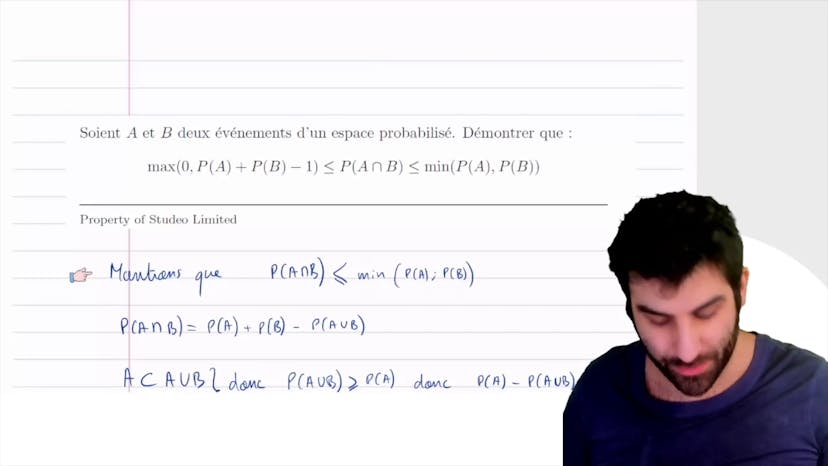 Tous les sujets
Tous les sujets Maths
Maths- Nombres et calculs
- Géométrie
- Fonctions
- Stats et Probas
- Analyse
- Géométrie
- Probas et Stats
- Analyse (spé)
- Géométrie (spé)
- Probabilités (spé)
- Arithmétique (exp)
- Complexes (exp)
- Analyse
- Algèbre
- Analyse
- Algèbre
- Probabilités
- Généralités sur les Probabilités
SecondePremièreTerminale2BAC SM MarocMPSI/PCSI Physique-Chimie
Physique-Chimie Corrigés de BAC
Corrigés de BAC Révisions Maths lycée
Révisions Maths lycée Prépa Examens
Prépa Examens
 Tous les sujets
Tous les sujets Maths
Maths- Nombres et calculs
- Géométrie
- Fonctions
- Stats et Probas
- Analyse
- Géométrie
- Probas et Stats
- Analyse (spé)
- Géométrie (spé)
- Probabilités (spé)
- Arithmétique (exp)
- Complexes (exp)
- Analyse
- Algèbre
- Analyse
- Algèbre
- Probabilités
- Généralités sur les Probabilités
SecondePremièreTerminale2BAC SM MarocMPSI/PCSI Physique-Chimie
Physique-Chimie Corrigés de BAC
Corrigés de BAC Révisions Maths lycée
Révisions Maths lycée Prépa Examens
Prépa Examens
Écriture ensembliste
Dans cet exercice, nous avons trois événements A, B et C provenant de l'univers Omega. Nous devons les traduire en langage ensembliste en utilisant les symboles d'intersection, d'union et le complémentaire. Voici les résumés en langage SEO-friendly :
1. Seul A se réalise : A ∩ (B̅ ∩ C̅) ou A ∩ (B ∪ C̅)
2. A et B se réalisent, mais pas C : A ∩ B ∩ C̅
3. Les trois événements se réalisent : A ∩ B ∩ C
4. Au moins l'un des trois événements se réalise : A ∪ B ∪ C
5. Au moins deux des trois événements se réalisent : (A ∩ B) ∪ (A ∩ C) ∪ (B ∩ C)
6. Aucun ne se réalise : A̅ ∩ B̅ ∩ C̅
7. Au plus l'un des trois se réalise : Ω̅ \ (A ∪ B ∪ C)
8. Exactement deux des trois se réalisent : (A ∩ B) ∪ (A ∩ C) ∪ (B ∩ C) ∩ (A̅ ∪ B̅ ∪ C̅)




